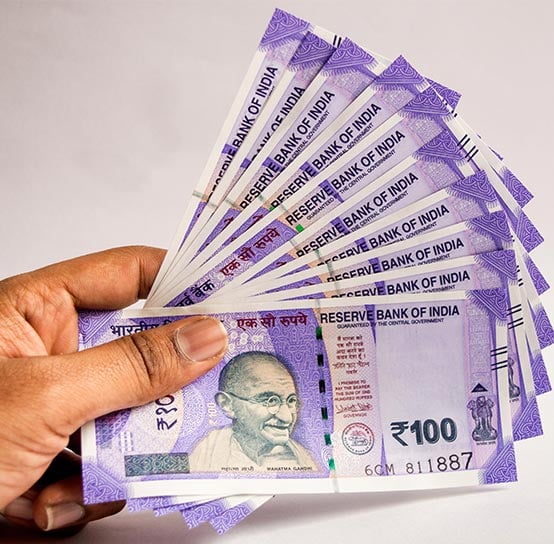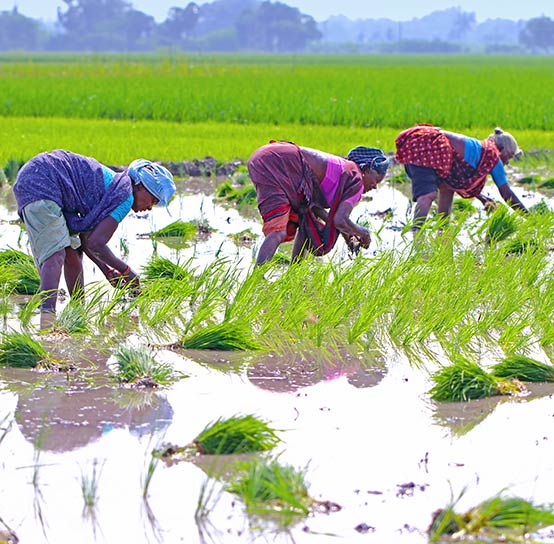-
Digital Natives
Unlock growth with Grant Thornton Bharat's Digital Natives solutions. Customised support for tech-driven companies in healthcare, gaming, and more.
-
Business Consulting
Our business consulting specialists offer a comprehensive blend of strategic advisory services. We assess the business, industry, operating model, synergy, skill sets and vision of the organisation and recommend the way forward
-
Digital Transformation Services
Grant Thornton’s digital transformation services help traditional businesses digitalise their business models with cloud technology, IoT consulting, app development and more DigiTech solutions.
-
Human Capital Consulting
Our Human Capital Consulting team harnesses technology and industry expertise to assist in constructing adaptable organisations with transparency, fostering productive and value-driven workforces, and inspiring employees to engage meaningfully in their tasks.
-
Production Linked Incentive Scheme
Production-linked Incentive Scheme by the Indian government is aimed at boosting manufacturing. Grant Thornton Bharat offers varied services across sectors to help businesses avail of this scheme.
-
Public Sector Advisory
Our Public Sector Advisory team has focused streams, aligned with the core priorities of the Government of India. We are responsible for providing innovative and customized technical and managerial solutions.
-
Tech Advisory
We have amalgamated Digital Transformation, IT Advisory & Information Management and Analytics into a new offering, DigiTech.
-
Direct Tax services
Our tax specialists offer a comprehensive blend of tax services, tax litigation, regulatory and compliance services, helping you navigate through complex business matters.
-
Indirect Tax Services
Get tax services by leading tax firm Grant Thornton India. Our indirect tax services include consulting, compliance and litigation services for corporate, international and transaction tax
-
Transfer pricing services
Our transfer pricing services experts provide a range of services from provision of APA services to handling large global assignments including Country by Country reporting.
-
US Tax
At Grant Thornton, we help individuals and dynamic companies deal with US tax laws, which are one of the most complicated tax legislations across the world.
-
Financial Services - Tax
Best financial advisory services, tailored for small and large businesses by the experts having comprehensive knowledge of domestic laws and access to multifaceted tools to provide a valuable results.
-
Financial Reporting consulting services
Our experts have significant hands-on experience in providing IFRS/US GAAP services, end-to-end solutions and support services to fulfil financial reporting requirements.
-
Fund accounting and financial reporting
International operations often lack standardisation and have varied local reporting formats and requirements. Our experts can offer proactive insights, practical guidance, and positive progress and help meet regulatory timeframes.
-
Compliance and Secretarial Services
Our experts can assist in overhauling the entire compliance machinery of the organisation through evaluation of the applicable statutory obligations, monitoring of adequate governance controls, reporting and providing ongoing support.
-
Global People Solutions
As businesses transcend borders, both domestic and global considerations need equal attention. Our interim CFO and financial controller support services help organisations meet the business vision.
-
Finance and accounting outsourcing
Our accounting experts assist organisations in managing their accounting and reporting. Our dedicated Integrated Knowledge and Capability Centre (IKCC), allows us to service both the domestic and global markets efficiently and cost-effectively
-
Compliance Management System
We have automation solutions for you that will allow meeting government requirements and remain diligent, which when failed, can lead to penalties and loss in revenue.
-
IKCC: Grant Thornton's Shared Service Centre
The India Knowledge and Capability Centre (IKCC), aimed at delivering solutions by developing capabilities, has completed four years of its journey.
-
Global compliance and reporting solutions
At Grant Thornton Bharat, we meet the challenges of our clients and help them unlock their potential for growth. Our professionals offer solutions tailored to meet our clients’ global accounting and statutory reporting requirements. With first-hand experience of local reporting requirements in more than 145+ locations worldwide, we provide seamless and consistent international service delivery through a single point of contact.
-
Related Party Transactions Governance
Grant Thornton Bharat's comprehensive related-party transaction services ensure good governance by adhering to regulatory requirements, promoting transparency, and providing robust policies for compliance, documentation, and accountability in related-party transactions.
-
Private Client Services
Grant Thornton Bharat Private Client Services offers tailored advisory for family-owned businesses, focusing on governance, compliance, tax, succession planning, and family office structuring to sustain wealth and preserve legacies across generations.
-
GTMitra: Tax & Regulatory Tool
GTMitra, a specialised tax and regulatory tool by Grant Thornton Bharat, supports multinational businesses in understanding laws and regulations for effective growth strategies.
-
Labour codes
Labour codes solutions help you transition through the new legislation. At Grant Thornton, we help businesses divide their approach to make sure a smooth transition.
-
Alerts
At Grant Thornton India, with the help of our tax alerts, we help to provide updates on how to minimise your tax exposure and risks.

-
Cyber
In today’s time, businesses have gone through large transformation initiatives such as adoption of digital technologies, transition to cloud, use of advanced technologies et al.
-
Governance, Risk & Operations
Our Governance, Risk and Operations (GRO) services encompass Internal Audit, Enterprise Risk Management, Internal Financial Controls, IT advisory, Standard Operating Procedures and other services.
-
Risk analytics
Grant Thornton Bharat’s CLEARR Insights is a state-of-the art data analytics platform that will help you in seamless data analysis and efficient decision-making.
-
Forensic & Investigation Services
The team of forensic advisory services experts consists of the best intelligence corporate experts, and fraud risk, computer forensic experts to deliver most effective solutions to dynamic Indian businesses.
-
ESG consulting
Grant Thornton Bharat offers holistic ESG consulting solutions for sustainable business outcomes. With industry expertise and AI technology, we drive long-term value.

-
Transaction Tax Services
Our transaction tax experts understand your business, anticipate your needs and come up with robust tax solutions that help you achieve business objectives ensuring compliance and efficiency
-
Deal Advisory
Unlike other M&A advisory firm in India, we offer deal advisory services and work exclusively with controlled and well-designed strategies to help businesses grow, expand and create value.
-
Due Diligence
Grant Thornton’s financial due diligence services are aimed at corporate looking for mergers and acquisitions, private equity firms evaluating investments and businesses/promoters considering sale/divestment.
-
Valuations
As one of the leading valuation consultants in India, Grant Thornton specializes in all the aspects of the process like business valuation services, financial reporting, tax issues, etc.
-
Overseas Listing
Overseas listing presents a perfect platform for mid-sized Indian companies with global ambitions. Grant Thornton’s team of experts in listings, work closely with clients during all stages.
-
Debt & Special Situations Solutions
Grant Thornton Bharat offers specialist debt and special situations consulting services, including restructuring, insolvency, and asset tracing solutions.
-
Financial Reporting Advisory Services
Grant Thornton Bharat Financial Reporting Advisory Services offer end-to-end solutions for complex financial requirements, including GAAP conversions, IPO support, and hedge accounting advisory, ensuring accurate financial reporting and compliance.
-
Financial Statement Audit and Attestation Services
Grant Thornton Bharat offers customised financial statement audit and attestation services, ensuring impeccable quality and compliance with global standards. Our partner-led approach, technical expertise, and market credibility ensure effective solutions for your business needs.

- Agriculture
- Asset management
- Automotive and EV
- Aviation
- Banking
- Education and ed-tech
- Energy & Renewables
- Engineering & industrial products
- FinTech
- FMCG & consumer goods
- Food processing
- Gaming
- Healthcare
- Urban infrastructure
- Insurance
- Media
- Medical devices
- Metals & Mining
- NBFC
- Pharma, bio tech & life sciences
- Real estate and REITs
- Retail & E-commerce
- Specialty chemicals
- Sports
- Technology
- Telecom
- Transportation & logistics
- Tourism & hospitality
-
 Article Improving credit penetration in BiharRBI’s priority sector lending guidelines have a key role to play in providing credit to small farmers, artisans and micro firms
Article Improving credit penetration in BiharRBI’s priority sector lending guidelines have a key role to play in providing credit to small farmers, artisans and micro firms -
 Article Sustainable farming and its economic imperativeSustainable farming in India is crucial for food security, economic growth, and environmental conservation, requiring government support and farmer education.
Article Sustainable farming and its economic imperativeSustainable farming in India is crucial for food security, economic growth, and environmental conservation, requiring government support and farmer education. -
 Article Agriculture and Budget: Immediate compulsions and long-term visionGovernment focuses on sustainable agriculture, digital infrastructure, and market intelligence to enhance productivity and global competitiveness in agriculture.
Article Agriculture and Budget: Immediate compulsions and long-term visionGovernment focuses on sustainable agriculture, digital infrastructure, and market intelligence to enhance productivity and global competitiveness in agriculture. -
 Article Union Budget 2024 expectations: Building resilience for consumer industryUnion Budget 2024 expectations: Building resilience for consumer industry
Article Union Budget 2024 expectations: Building resilience for consumer industryUnion Budget 2024 expectations: Building resilience for consumer industry
-
India-UK
India-UK

The Government of India (GOI) announced Production Linked Incentive (PLI) scheme for Automobile and Auto components sector to boost domestic manufacturing of Advanced Automotive Technology products and attract investment in the automotive manufacturing value chain with the highest total budgetary allocation of INR 25,938 crore. The industry contributes 35% of India’s Manufacturing GDP.
This PLI scheme is distinctive as it attempts to address the competitive gaps owing to the rapid technological shifts and provides the opportunities to make India an integral part of global supply chain for advance automotive technology products.
Open for existing automotive companies as well as new investors, the scheme is a ‘sales value linked’ scheme and has two components of Advance Automotive Technology products:
- Champion OEM Incentive Scheme on battery electric vehicles (EV) and hydrogen fuel cell vehicles (HFCV) of all segments.
- Component Champion Incentive Scheme
Eligibility criteria to apply under the schemes are as follows (INR in Crores):
- For existing automotive investor
- Minimum Global Group Revenue of INR 10,000 and INR 500 for OEM and Component manufacturer respectively
- Minimum Global Investment in fixed assets of INR 3,000 and INR 150 for OEM and Component manufacturer respectively
- For new non-automotive investor Minimum Global net worth of INR 1,000 crores
Above eligibility is based on audited financial statement for FYE 31 March 2021. In addition to this, the Company will also have to meet the criterion of incremental cumulative domestic investment and determined sales target.
1. Amendment in the list of eligible products
Ministry of Heavy Industries (MHI) has prescribed the following vehicle as Advance Automotive Technology Vehicles eligible for Champion OEM Incentive scheme.
- Battery electric vehicles of all segments which meet the performance criteria of FAME-II scheme or as notified from time to time by MHI
- Hydrogen fuel cell vehicle of all segments
List of Advance Automotive Technology Components was notified on 9 November 2021. Fast-evolving automotive regulations on emissions, safety and energy efficiency, coupled with swift changes in consumer trends are the driving factors for technological shifts globally including shift towards electric vehicles and rising level of vehicle automation and connectivity.
It is pertinent to note that the guidelines mention that the list of eligible products can be amended from time to time depending upon technological developments.
With this ambivalence in the list of eligible products, it might not be possible for applicants to reap benefit for the entire tenure of the PLI scheme. Further, in case applicant is not able to achieve the turnover and investment criteria due to alteration of the list of eligible products, MHI may invoke the bank guarantee furnished by the applicant.
Further, for continuation of the PLI scheme benefit, an applicant may require additional investment for everchanging uncertain eligible product criteria.
2. Minimum 50% of domestic value addition
The scheme guidelines require a minimum of 50% domestic value addition.
A study has estimated that top 12 import categories such as drive transmission, steering units, engines etc. account for 62% of total imports. While India remains competitive in some areas, there remain technologies and parts that are either not made in India or for which we haven’t matched the global scale, prices, or quality. India relies heavily on import of following:
Lithium batteries
About 58% of the world’s lithium reserves are in Chile and about 43% of rare earth mineral reserves are in China. Owing to this skewed concentration globally, India had to import lithium batteries in huge quantities. In 2019-20, India imported 450 million units of lithium batteries valued at INR 6,600 Crores. Lithium battery pack is the most expensive component in an electric car, costing between 30 to 40 percent of the vehicle’s total cost.
Semiconductor chips
Prices of semiconductors have been climbing since 2020 amid global supply crunch Chip lead time increased to 17 weeks from 12 weeks in 2020. This will result in rise in import input cost as India relies heavily on import of semiconductor chips.
Therefore, such heavy reliance on imports of inputs such as lithium batteries, semiconductor chips, e-drive, circuits, transistor etc. which accounts about half of the vehicle’s cost, may pose a significant challenge for applicants to comply with 50% of minimum domestic value addition criteria.
3. Restraint of eligible Investment under PLI scheme
For the claim of incentive, it is mandatory to fulfil the criteria for cumulative minimum domestic investment yearly as prescribed.
Land and building cost
Land cost will not be considered as eligible investments under this scheme. Also, building structure of the main plant and utilities will be considered provided it does not exceed 10% of the Minimum Cumulative Domestic Investment for the given segment.
Considering land and building forms a major part of the investment, such restriction poses a burden on applicants for additional funding which might be required for these investments and the wake of the COVID-19 has led to uncertainty in the economic environment which may upshot another challenge of sourcing fund.
Exclusion of preparatory investments made prior to 1 April 2021
Despite the COVID-19 pandemic and its damage to the Indian economy, the electric vehicle and e-mobility sector have been able to boost the confidence of investors for lapping of opportunities. Even though EV sales declined 20% YoY in FY 2020-21, it was good year for the EV industry in terms of funding and investments.
PLI scheme prescribes cumulative domestic investment commencing from 1 April 2021 and capitalization in the books of accounts. Consequently, capital work-in-progress investments invoice dated prior to 1 April 2021 would not be considered as eligible investment.
Acceptability of EV grew since FY 2019-20 and consequently led to investments in the industry from FY 2020-21 onwards. Therefore, exclusion of investments made in FY 2020-21 may impose additional burden on applicant companies to comply with the condition of minimum cumulative domestic investments.
4. Frontloading of Investment
Guideline has prescribed that preference will be given to applicants frontloading their investments and investment commitment will be evaluated basis Net Present Value (‘NPV’).
This could cause disparity for applicants forecasting to comply with prescribed cumulative domestic investment criteria yearly. Further, as the total budgetary outlay is INR 25,938 crores, in case the pay-out exceeds the budgetary outlay, the scheme could be exhausted earlier.
As a result, despite frontloading of investments, there may arise a situation where anticipated incentive is not grasped by applicant, if the total budgetary outlay gets exhausted.
On the other hand, if investments are not appropriately frontloaded, applicant may not be selected.
5. Charging Infrastructure
Successful execution of the PLI scheme would require considerable investment in the charging and other infrastructure to support the operation of EV and HFCV amongst consumers. Government needs to fast-track its plan for setting up charging infrastructure to boost the demand for electric vehicle in India and to mitigate range anxiety faced by consumers as their car may get stalled if they run out of power.
In a recent interview, the NHAI chairman Mr. Giridhar Aramane said 700 charging stations will come as part of wayside amenities on national highways. EV charging stations will be set up every 40-60 kms of 40,000 kms of highway coverage by 2023.
Thus, infrastructure challenge may deter the desired sales of EV and HFCV and as a result complying with Y-o-Y growth in determined sales value will be dubitable.
Conclusion:
Thought, there are certain speed limiters for auto PLI scheme, undermining the scheme at the current stage rather than by the results in the coming time would be imprudent. As Quoted by Milton Friedman, “One of the great mistakes is to judge policies and programs by their intentions rather than their results”.
The initiative of PLI scheme will help leapfrogging technology to environmentally cleaner vehicles, increase localization with accelerated investment towards EV ecosystem and has potential to make India an export hub in the global auto supply chain.
Even though PLI scheme is welcome step to encourage manufacturer for production of advance automotive technology product for the auto industry, if the abovementioned speed limiter were addressed it will attract more manufacturer for production of fuel-efficient vehicle at full speed!